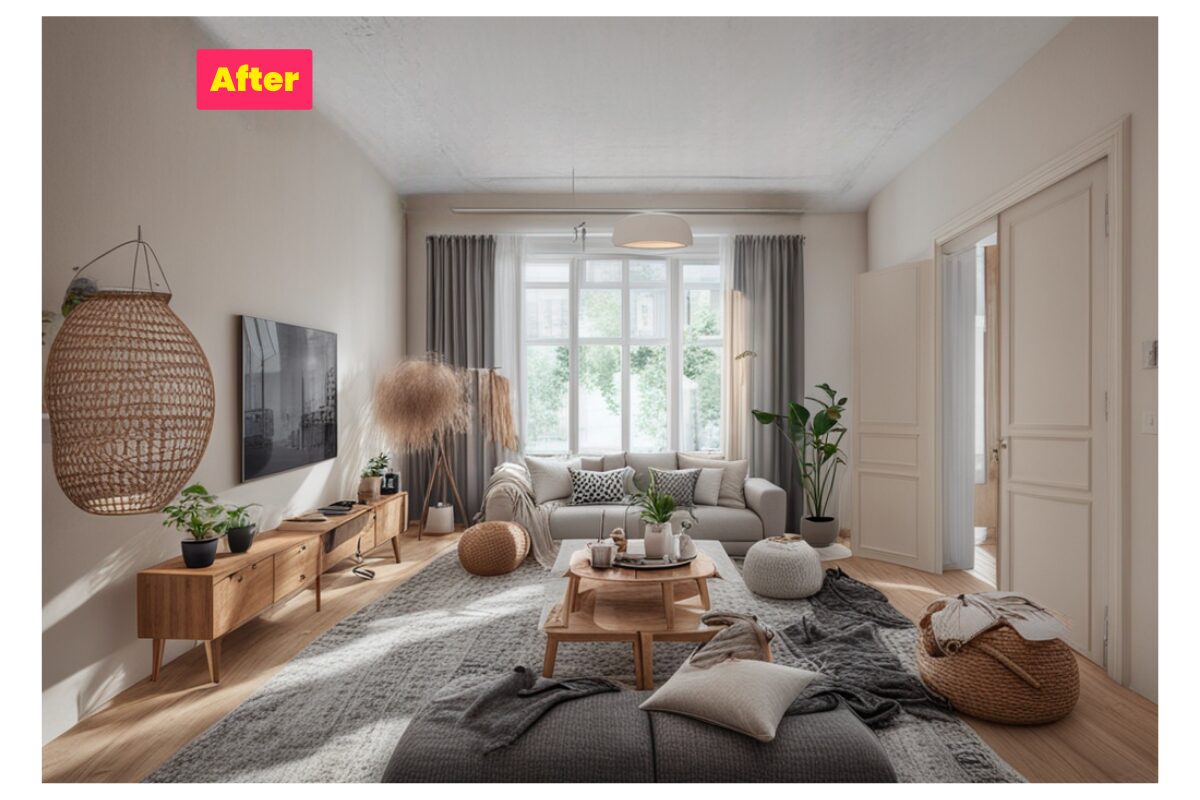80% of potential buyers have difficulty visualizing themselves in 90% of the real estate properties presented in your online listings…
As a real estate professional, do you want to optimize the sale of your properties?
More specifically, those with outdated decor or needing renovations that attract little interest following your online listings? (the photos are not appealing… and thus, visits are rare!)
If you are interested in virtual home staging, you are on the right track!
What is Virtual Home Staging?
Virtual home staging involves virtually furnishing and decorating a room from a photo or a floor plan.
It has been proven that this method positively affects the property selling process, whether in terms of reducing the time needed to sell or decreasing the rate of negotiation.
Indeed, attractive images of a furnished space capture attention on real estate listing sites and generate more interested clients to visit the property.
Thus, properties with virtual home staging tend to sell faster and can even, in some situations, facilitate price negotiations (especially when the decor creates a strong appeal for potential buyers)
Key Figures of Virtual Home Staging
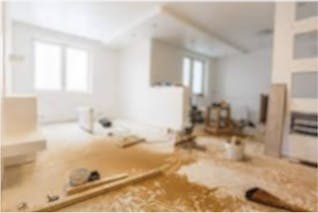
Blurry photo without InstantDecoAI
(Time to sell: 130 days)
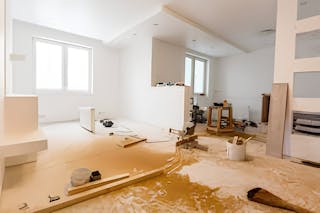
Enhanced photo with InstantDecoAI
(Time to sell: 100 days)
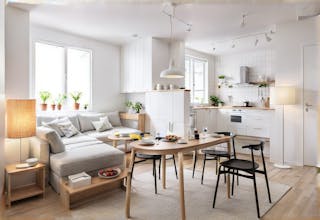
Furnished photo with InstantDecoAI
(Time to sell: 35 days)
Let’s start with some numbers to fully grasp the importance of adopting Virtual Home Staging in your profession or even for your personal projects.
1st observation:
- 80% of real estate transactions start from online listing sites, where 60% of future buyers focus solely on the photos without taking the time to read the text.
2nd observation:
- Only 20% of potential buyers can project themselves when faced with unattractive photos. The remaining 80% are discouraged by empty or poorly decorated properties and do not click on your listing.
3rd observation:
- On average, in your listings, 70% of properties have decor that needs revision, 10% are empty with work to be done, and 10% are empty, new, or renovated. This represents 90% of listings that do not captivate 80% of potential online buyers!
1st effect of home staging:
- The average selling time of a property is 130 days without Home Staging. It is reduced to 35 days with Home Staging.
2nd effect of home staging:
- The average negotiation rate on the selling price for properties without Home Staging is 8.7%, while it can be reduced to 3.2% on average thanks to Home Staging.
Thus, virtual home staging can be extremely beneficial for all real estate professionals, especially since with recent technological advances in artificial intelligence, some tools are now very simple to use and very accessible.
Let’s summarize the advantages of virtual home staging (as well as the disadvantages, to maintain an objective approach):
Advantages and Disadvantages of Virtual Home Staging
Pros (+)
1. Design Options Flexibility: Virtual home staging offers a multitude of styles and designs for each room, allowing to present different layout proposals based on potential buyers’ tastes.
2. Reduced Storage Costs: Unlike traditional home staging, virtual home staging does not require physical furniture, thus saving costs on storage and transportation of furniture.
3. Sustainability and Ecology: Virtual home staging is more eco-friendly by reducing the waste of resources and greenhouse gas emissions related to the production, transportation, and disposal of furniture.
4. Ease of Collaboration and Communication: Teams can work together more easily with digital files and share their ideas via email or virtual meetings, thus improving the efficiency of the home staging process.
5. Time-saving: Virtual home staging is generally quicker to set up than traditional home staging. Modifications can be made quickly and easily, thus reducing time to market and enabling the agency to present properties to potential buyers faster.
Cons (-)
1. Lack of Realism: While virtual home staging can be very realistic, there’s always a risk that potential buyers might be disappointed when they visit the property in person and find differences from the virtual images.
2. Initial Cost: Although virtual home staging can be more cost-effective in the long run, it still requires an initial investment to obtain visuals via agencies or to purchase software and train on necessary skills.
3. Technological Dependence: Virtual home staging relies on the use of digital technologies, which can present compatibility or functionality issues and thus limit access for some clients and real estate agents, especially for software that can be complex to learn.
4. Potential Fraud: Virtual home staging images can sometimes be used deceptively to hide problems or flaws of the property, which can harm the trust relationship between the real estate agent and the potential buyer.
Virtual home staging remains an interesting alternative to traditional home staging, which involves physically arranging the room, a costly and inflexible solution. Given the current challenges in the real estate sector, economical options are necessary.
The popularity of virtual home staging has increased significantly recently due to its speed and low cost. However, there are many solutions available on the market, and it can be challenging to navigate them.
If you’re not sure where to start, this guide is designed for you!
What are the Different Virtual Home Staging Solutions in 2024
Before delving deeper into your research, it is essential to know that there are mainly two methods for virtual home staging: you can do the home staging yourself using software or online applications, or you can hire specialized agencies to do it for you
1. Specialized Home Staging Companies (External Agencies)

It is possible to seek specialized services in virtual home staging that will handle all the required modifications on the photos you provide.
This option is most commonly chosen by agents and real estate agencies, who may not necessarily have the time or expertise to retouch or redecorate interior photos or floor plans of their clients’ properties themselves.
These services allow you to send these photos or floor plans to design agencies specialized in virtual interior decoration, providing a detailed brief of what you want to achieve. They will then take a few days to create the desired room layout.
This is the simplest and highest quality method of virtual home staging, but also the most expensive. Generally, the results are good but cost on average $40 per photo, with rates that can exceed $100 per photo.
In general, the offers range from simple furnishing of a photo of an empty room to renovating a room that is already furnished by removing the existing furniture, which is often more expensive. Prices will also vary if you are doing the home staging from a floor plan.
Be careful to be very precise in your requests, as the results obtained may not exactly match what you had imagined.
Advantages and Disadvantages of Virtual Home Staging by Agency
Advantages (+)
1. Experience and Expertise: Virtual home staging professionals usually have extensive experience and expertise in creating attractive and realistic images, ensuring a high-quality result.
2. Current Trend Mastery: Specialized services are often up-to-date regarding market trends and interior design, allowing them to create relevant and appealing visuals for potential buyers.
3. Time-saving to focus on other responsibilities: By outsourcing virtual home staging, real estate agents have more time to dedicate to other important tasks related to sales and managing their agency.
Disadvantages (-)
1. Lack of Control: By using external services, real estate agents may have less control over the virtual home staging process and design decisions.
2. Additional Costs for Modifications: If modifications are needed to better match expectations, additional costs may be incurred to make these changes by specialized services.
3. Confidentiality and Intellectual Property: When sharing real estate photos with external services, there may be concerns about the confidentiality and intellectual property of the images and design concepts created.
4. Possibility of Quality Variability: Although specialized services generally guarantee the quality of their work, there may be variations depending on the skills and expertise of the team or professional hired.
The 6 Best Specialized Services for Virtual Home Staging (for Real Estate Agents and Agencies)
1) Box Brownie
Virtual staging from a picture:
- Cost: $24 per photo
- Turnaround: 48 hours
Virtual Renovation from a picture:
- from $24 to $184 per photo
- Turnaround: 5 to 7 days
2) Virtualstaging.com
Virtual staging from a picture:
- Cost: $24 per photo
- Turnaround: 4 to 8 hours
Virtual Renovation from a picture:
- from $90 to $150 per photo
- Turnaround: 1 day
3) Plan-it-all
Virtual staging from a picture:
- Cost: from $15 per photo
- Turnaround: 48 hours
Virtual Renovation from a picture:
- from $20 per photo
- Turnaround: 48 hours
4) Styldod
Virtual staging from a picture:
- Cost: from $16 per photo
- Turnaround: 12 to 48 hours
Virtual Renovation from a picture:
- from $5 to $15 per photo
- Turnaround: 12 to 48 hours
5) Stuccco
Virtual staging from a picture:
- Cost: from $29 per photo
- Turnaround: 12 to 24 hours
Virtual Renovation from a picture:
- from $39 per photo
- Turnaround: 12 to 24 hours
2. Virtual Home Staging through Artificial Intelligence (Quick and Easy Solution)

Virtual home staging based on artificial intelligence is a brand new solution and currently the most affordable and easiest to use on the market.
It allows for a completely automatic virtual home staging in just a few seconds, with a wide choice of interior decoration styles.
This feat is made possible by recent advancements in the field of artificial intelligence, which you have surely heard about, notably with the well-known ChatGPT, and the resulting tools can be extremely useful and efficient when used correctly.
The rates are generally very reasonable, ranging from $9 per month to $50 per month for unlimited virtual home staging with a wide range of interior decoration styles.
However, as you can imagine, the results are not always perfect and can vary. It is often necessary to make several attempts to obtain a satisfactory photo that has its place in an online real estate listing.
The best way is to try it for yourself to get an overview! We offer you 5 free trials with our tool here.
Advantages and Disadvantages of Virtual Home Staging by AI
Advantages (+)
1. Increased Productivity: By obtaining results quickly and simplifying the process, real estate agents can complete more virtual home staging projects in less time, thus improving their efficiency.
2. Accessibility for Beginners: The ease of use of AI-based tools makes virtual home staging accessible to those with limited interior decoration skills or software design knowledge.
3. Adaptability and Evolution: AI techniques continue to improve and evolve, meaning that virtual home staging tools using AI could offer increasingly accurate and adapted results over time.
Disadvantages (-)
1. Lack of Customization: Despite the ease of use, AI-based virtual home staging tools may offer less customization and choice than a manual approach or with comprehensive software.
2. Reliability of Results: Results generated by AI can sometimes be unpredictable, which may require manual adjustment or retouching to achieve the desired image.
How Does Interior Design and Decoration by Artificial Intelligence Compare to Traditional Solutions?
Recent advancements in artificial intelligence have led to numerous practical applications, particularly in the real estate sector. Innovative solutions for image creation and editing enable the use of AI to perform virtual home staging almost instantly and at an extremely low cost.
Several effective tools have developed around this technology and show impressive results when used correctly.
Given the speed and cost of automatic modifications, it’s normal for the results of home staging to differ from traditional solutions. Indeed, they can be more random and less conforming to your expectations compared to a design made by an architect who strictly respects your requests.
However, after several attempts, the results generally reach a sufficient quality to be added to a listing or presented to a client.
Here is a comparison of virtual home staging results on empty or already furnished rooms using an artificial intelligence tool (InstantDecoAI – try for free here) versus results provided by interior architect agencies (such as Styldod or BoxBrownie)
Virtual Bedroom Design by an Architect from Styldod:
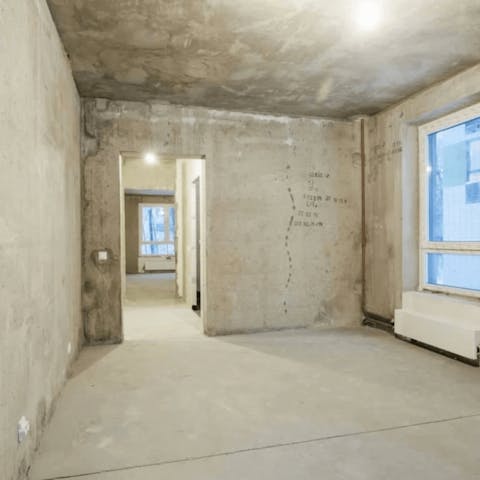
Original photo
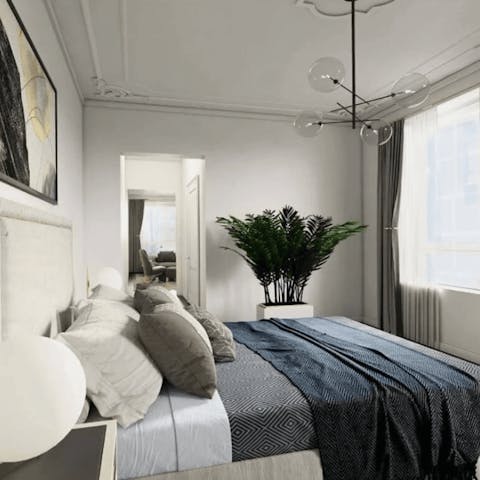
Transform into a bedroom with modern decoration by an agency
Turn around: 2 days
Cost: $39 with homeshapers.co
Virtual Bedroom Design by Artificial Intelligence from InstantDeco.ai

Original photo
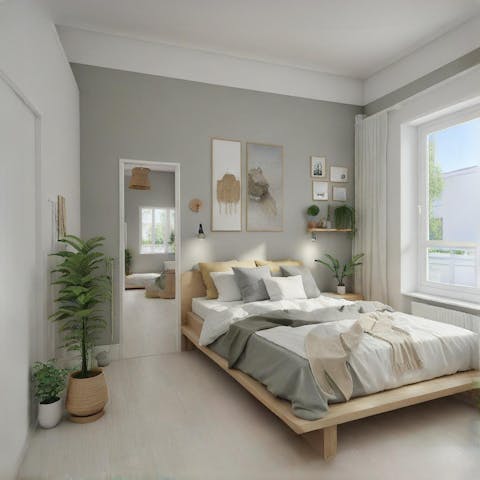
Bedroom layout by AI with a modern decoration
Turn around: 30 seconds
Cost: $39/month
Let’s take another example with the renovation of a bathroom
Virtual renovation of a bathroom by an architect from BoxBrownie
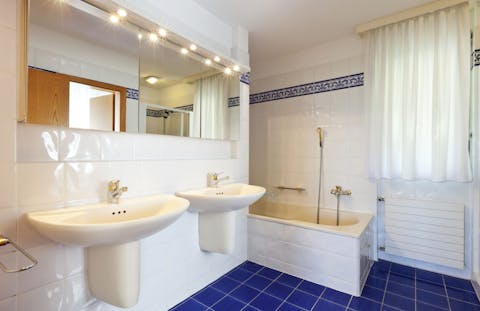
Original photo
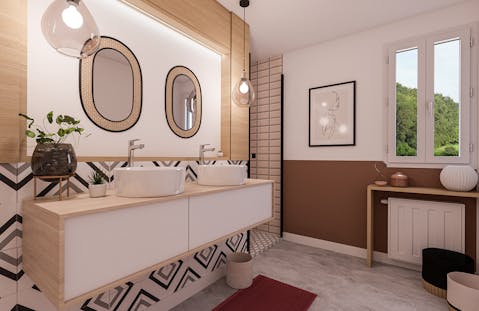
Bathroom renovation with a modern style by an agency
Turnaround: 3 days
Cost: $69
Virtual renovation of the bathroom by the artificial intelligence of InstantDecoAI

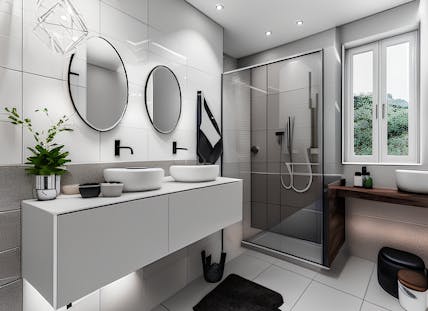
Bathroom renovation by AI with a modern style
Turnaround: 30 seconds
Cost: $39/month
Continuing with the renovation of an old living room
Virtual renovation of a living room by an architect from Stucco:
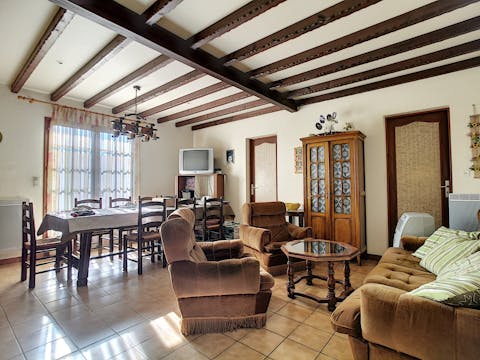
Original photo

Renovation of the living room with a modern style by an agency
Turnaround: 3 jours
Cost: $69
Virtual renovation of the living room by the artificial intelligence of InstantDecoAI

Original photo
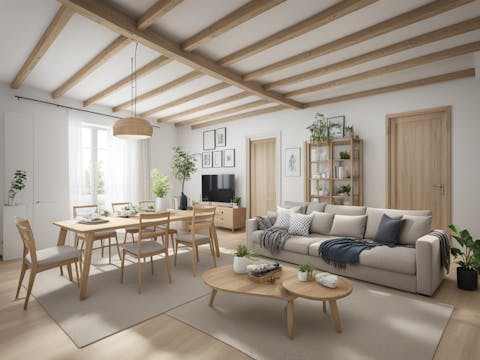
Renovation of the living room by AI with a modern style
Turnaround: 30 secondes
Cost: $39/month
Artificial intelligence thus offers a very interesting and economical alternative to traditional virtual home staging done by interior architects.
Although the results may vary and require several attempts to achieve the desired quality, the advantages in terms of speed and cost make this solution attractive for real estate professionals.
Comparing different options will help you determine which approach best suits your needs and those of your clients. Virtual home staging by AI is undoubtedly an innovation to consider for optimizing the presentation of your real estate properties, thereby accelerating your sales.
3. Traditional Home Staging Software (More Time-Consuming and Complicated Solution)
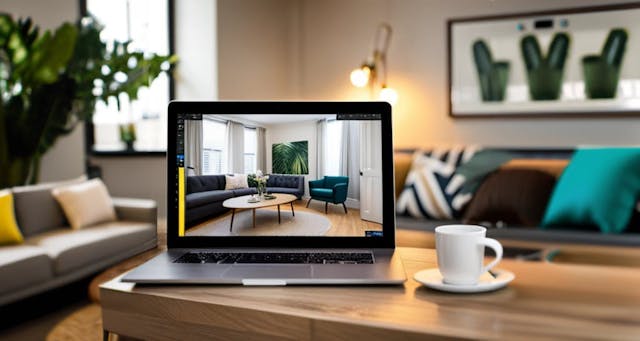
Using software for home staging is also a more economical option compared to external services. However, it can be more complex and time-consuming if you do not have the required skills.
There are mainly two categories of home staging software:
1. Architectural-type software, which allows you to perform virtual home staging from scratch, based only on plans or existing interiors that you must reproduce yourself. You generally pay for the software once and can transform an unlimited number of photos.
2. Semi-automatic home staging software, which allows you to furnish and decorate from a photo (taken with your phone, for example). They typically allow you to select the desired furniture using your mouse. The paid tools cost on average 7 to $10 per photo.
Although these solutions are relatively affordable, it’s important to note that there are many different software programs and applications. Some are available online, while others must be downloaded to your computer or smartphone. Some are outdated and may have bugs or be difficult to use. Moreover, it is essential to have some knowledge of interior decoration and a good taste to create coherent arrangements that meet the specific expectations of users
Advantages and Disadvantages of Virtual Home Staging Software
Advantages (+)
1. Maximum Customization: Using home staging software allows you to personalize every detail according to your preferences, requirements, and those of your clients.
2. Accessibility: With a variety of software available online or for download, you can easily access these tools from your computer or mobile devices and use them anytime at your convenience.
3. Transferable Skills: Learning to use these software programs will develop technical and creative skills that could be useful in other aspects of your work or personal projects.
Disadvantages (-)
1. Learning Curve: Learning to use home staging software, especially the more complex ones, can require time and patience to master the features and design techniques.
2. Updates and Maintenance: Some software requires regular updates, which can incur additional costs or compatibility issues with your computer systems.
3. Inconsistent Quality: The quality of the results depends directly on the user’s skill and expertise, leading to variability in the images produced.
4. Time Commitment: Real estate agents may find it challenging to dedicate sufficient time to learn and use these software programs, especially if they have many responsibilities related to managing their agency.
5. Technical Considerations: Using these software programs may require technical skills to troubleshoot problems, bugs, or incompatibilities with your computer or smartphone.
The Best Traditional Virtual Home Staging Software Starting from a Plan (Ideal for an Interior Architect)
These interior decorating software programs, whether free or professional, offer varying levels of ease of use and allow you to perform virtual home staging yourself.
For each project, you will first need to recreate the room in question by drawing the plan and then placing the desired furniture, selected either from a catalog provided by the software or by creating them yourself.
These interior design tools are therefore better suited for architects or individuals willing to dedicate time to their interior decoration project. Feel free to consult our complete ranking of the best interior decorating software.
In the meantime, here is a list of 8 software programs, ranked from the simplest to the most complex to use:
1) IKEA Home Planner
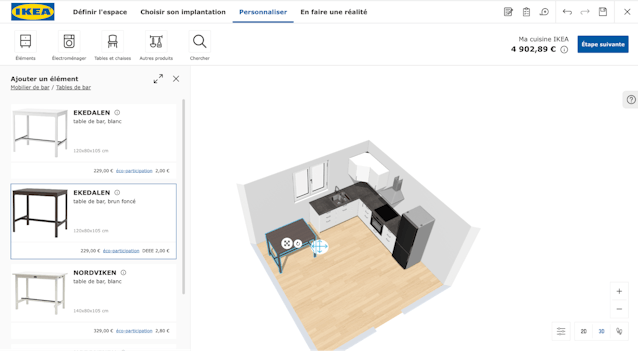
- Pricing: Free
- Complexity: Very Easy
- Availability: Online Web Version
This is a very user-friendly online tool specifically designed for planning interior layouts with IKEA products. It offers an intuitive interface and an IKEA object library to customize spaces. It’s ideal for people who want to design an interior with IKEA furniture, without needing advanced features.
2) Homestyler
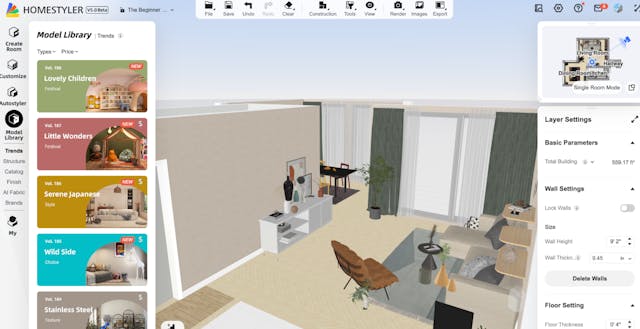
- Pricing: Free with in-app purchases for some objects and additional features starting from 5€/month
- Complexity: Easy
- Availability: Online and iOS and Android apps
3) Archifacile
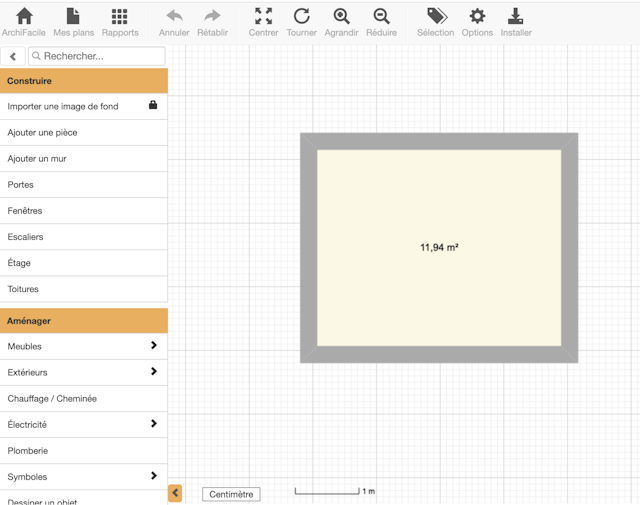
- Pricing: Free with paid options starting from 7€ per month
- Complexity: Easy
- Availability: Online
4) Kozikaza
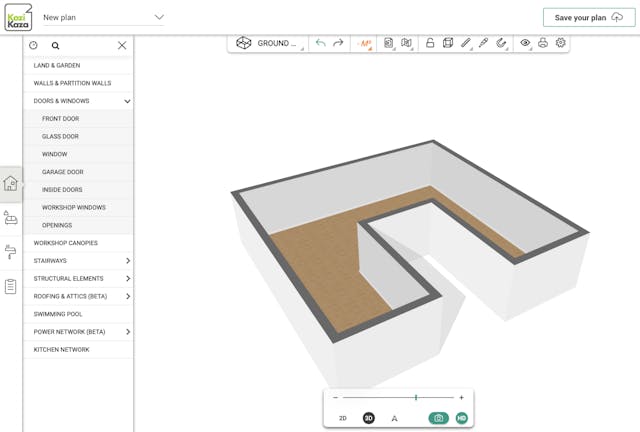
- Pricing: 100% Free
- Complexity: Fairly Easy
- Availability: Online, iOS and Android App, MacOS Software
This is a free online software that allows for the creation of 2D plans and 3D layouts for construction and interior projects. It’s fairly easy to use and offers an object library to customize spaces. Ideal for individuals and hobbyists who wish to design their house or interior.
5) Planner 5D
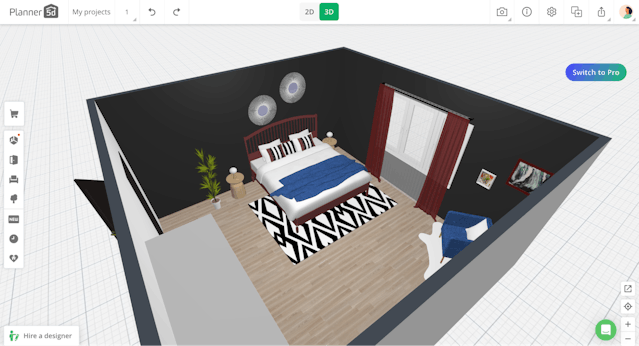
- Pricing: Free with a pro version at 49€ per month
- Complexity: Fairly Easy
- Availability: Online, Windows and Mac software, iOS App
This online software, fairly easy to use, enables the creation of 2D plans and 3D interior and exterior layouts. It features an intuitive interface and an object library for adding furniture and decorative items. Suitable for amateurs and beginners who want to quickly plan a project.
6) HomeByME
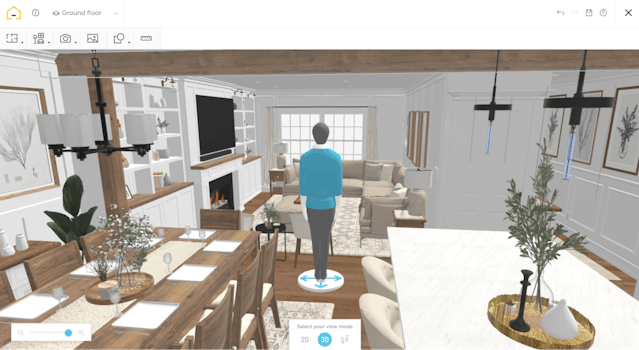
- Pricing: Free for the first 5 projects; unlimited version starting at 29€/month
- Complexity: Moderate
- Availability: Online, iOS and Android App
7) Cedreo (ex Cedar Architect)
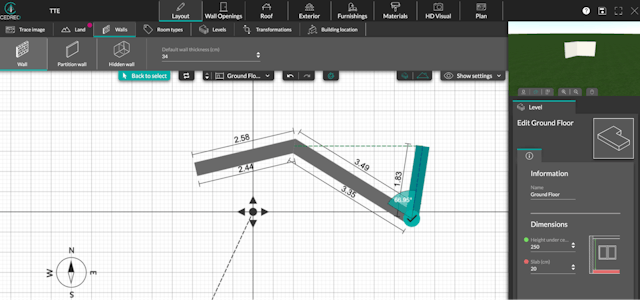
- Pricing: Free option with limited features; rates starting at 59€/month for professionals
- Complexity: Fairly Difficult
- Availability: Online Web Version
Mainly aimed at construction and real estate professionals. It enables the creation of 2D plans and photorealistic 3D interior and exterior renderings. It is cloud-based and offers a comprehensive library of objects, materials, and textures
8) SketchUp
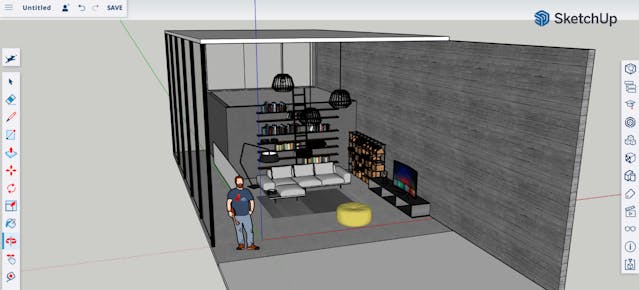
- Pricing: Free version SketchUp Free; SketchUp Go at 109€/year; SketchUp Pro at 285€/year; Studio Version 639€/year
- Complexity: Difficult
- Availability: Online (Free Version, Go, Pro, and Studio), on iPad (Go, Pro, and Studio Versions), desktop software (Pro and Studio Versions)
SketchUp is a highly versatile 3D modeling software used by both professionals and hobbyists. It offers a multitude of options and tools, making it more challenging to master. It allows for the creation of extremely detailed and realistic architectural and interior models. A paid version, SketchUp Pro, is available for professionals.
Traditional Virtual Home Staging Software Starting from a Photo (Ideal for a Real Estate Agent)
For faster and more realistic home staging, it’s better to use an existing photo without having to reconstruct everything.
Some newer software offers this attractive feature that allows you to customize and virtually furnish an interior photo yourself.
Here are two leading software in this field:
1) Apply Design
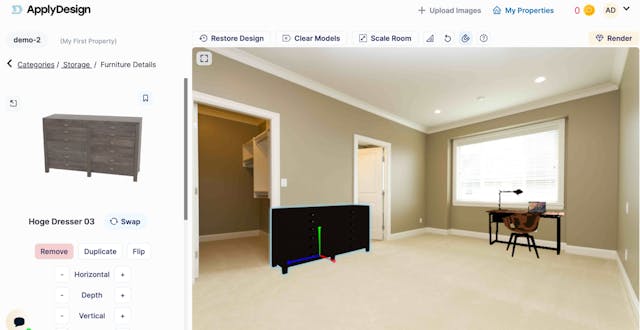
- Pricing: One free trial (one photo), then pricing starts from 7€ per photo
- Complexity: Very Easy
- Availability: Online Web Version
You simply add the photo of your interior and then choose from an online catalog the furniture you want to add. Using your mouse, you can simply place the elements in the room until you achieve the desired layout.
2) Auto Design

- Pricing: One free trial (one photo), then starting from 5€ per photo
- Complexity: Very Easy
- Availability: Online Web Version
A tool very similar to the previous one both in functionality and design, although the price per photo is slightly cheaper. It is also possible to try it for free.
In conclusion, virtual home staging has become an essential element of real estate in 2023, thanks to its many advantages and the different solutions available on the market. With specialized external services, home staging software, and now artificial intelligence, real estate professionals have a choice for enhancing their online listings.
Among all these options, InterieurAI’s AI-powered virtual home staging tool proves to be particularly effective. Combining speed, ease of use, and affordability, it offers an ideal solution to enhance your properties and attract more potential buyers.
Feel free to try InstantDecoAI for free and discover how to transform your real estate listings with the power of artificial intelligence in record time. Stay ahead of the real estate market and offer your clients the best service with this innovative technology.
